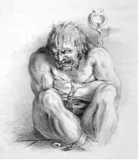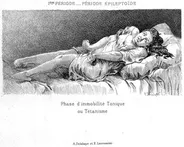History News
World Mental Health Day: How History Informs Stigma
World Mental Health Day: How History Informs Stigma
Content Warning: discussion of mental illness and suicide
Sunday 10th October 2021 is World Mental Health Day. Celebrated internationally since its inception in 1992 and supported by the WHO, the day’s goal is to ‘raise awareness of mental health issues and to mobilise efforts in support of mental health’.

The stigmatisation of mental illness is an important issue, and is understood to have a serious impact on the ability of people suffering from poor mental health to speak about their experiences and seek help. The impact that this stigma can have on certain groups, particularly men, has significant consequences, and is believed to contribute to the male suicide rate.
Where does this stigma come from? In part, I would argue, it stems from historical (mis)conceptions.
When we think about ‘mental health’ or ‘mental illness’ and the past, several stereotypes likely come to mind. Two main ‘types’ are probably the aggressive lunatic, and the hysterical woman. The spectre of the asylum looms large over our ideas about how mental health was responded to in the past. We might also think of disturbing treatments throughout time from trepanning to lobotomy. These ideas, while certainly grounded in historical reality, do not represent the breadth of mental experience in the past. They also contribute towards modern-day conceptions of mentally ill people as violent, and women as overly emotional. We have tended to focus on the ‘extremes’ of historical conceptions of mental illness, which creates a false dichotomy between these extreme states and ‘normal’ society, which may contribute towards the ‘othering’ of those with mental health problems.

Figure 1: Charles Bell, Essays on the anatomy of expression in painting (1806). Wellcome Collection Public Domain

Figure 2: Paul Richer, Clinical studies on hystero-epilepsy or great hysteria (1881). Wellcome Collection, Public Domain
The concept of madness was a popular one among historians in the closing decades of the twentieth century, though even then, scholars such as Roy Porter made it clear that they were using the terminology of earlier periods, rather than casting any judgement on those under discussion (Porter, 2006, p.8). In 2011, Andrew Scull remarked that madness is no longer an acceptable term (Scull, 2011, p.1). This idea is also evoked in the title of Greg Eghigan’s 2010 book, From Madness to Mental Health. Eghigan states that the title ‘points to a historical shift from a longtime professional and societal focus on treating severe cases to a more recent focus on promoting the mental well-being of a wide range of individuals’ (Eghigan, 2010, p.3). Arguably though, historians have contributed towards this focus on the most ‘severe cases’.
In many ways this is unsurprising. The ‘extremes’ of past people’s behaviour may seem a more evocative subject to research, and the sources for doing so may be comprehensively collected together in asylum or other medical records. Extremely important work has been and continues to be done on the asylum, particularly around the experiences of those who were committed. To achieve a fuller picture of mental experience in the past however, we need to move beyond the extremes. For instance, the experience of melancholy has often been taken to refer to an extreme state, though more recent work has explored the varied meanings and expressions of melancholy. Ranging from sadness to delusions, many of the ‘degrees’ of melancholy were taken by those at the time to constitute a fairly common experience (Lund, 2021, pp.1-2).
We also need to be careful not to transpose the experiences of those at the extremes onto the rest of the spectrum of mental experience. A particular example of the dangers of this can be found in the study of suicide. We tend to assume that suicide is something that has never been able to be spoken about freely (or at least not since the ancient world). This stems from research which has explored the condemnation of the act of suicide, particularly in Christian societies, which was often framed as both a sin and a crime (MacDonald and Murphy, 1990, p.2). Yet talking about suicidal feelings, or even attempting suicide in some cases, did not necessarily carry the same level of stigma. It appears that, through belief in the devil’s temptation, suicidal thoughts were deemed to be almost a normal part of the Protestant experience, and thus they could be expressed with far more ease than has been supposed.
Again, in the case of suicide, the focus on the extreme of suicidality in the past, on those who actually took their own lives, feeds into the modern perception that suicidal people will eventually act on such thoughts. A false dichotomy is thus created between people who commit suicide, and people who do not experience suicidal thoughts. Exposing such nuances is important to deconstructing stigma around suicide, and mental illness more broadly, particularly as, in the modern day, 1 in 5 people are believed to experience suicidal thoughts.
As Ali Haggett argued in 2016, history ‘provides a powerful tool for challenging the inevitability of certain negative health-related beliefs and behaviours’. As this blog post has sought to demonstrate, we need to be extremely careful about the broader implications we take from our research in this area. Nevertheless, there is great potential to deconstruct modern day stigma of mental health and mental illness through historical study.
